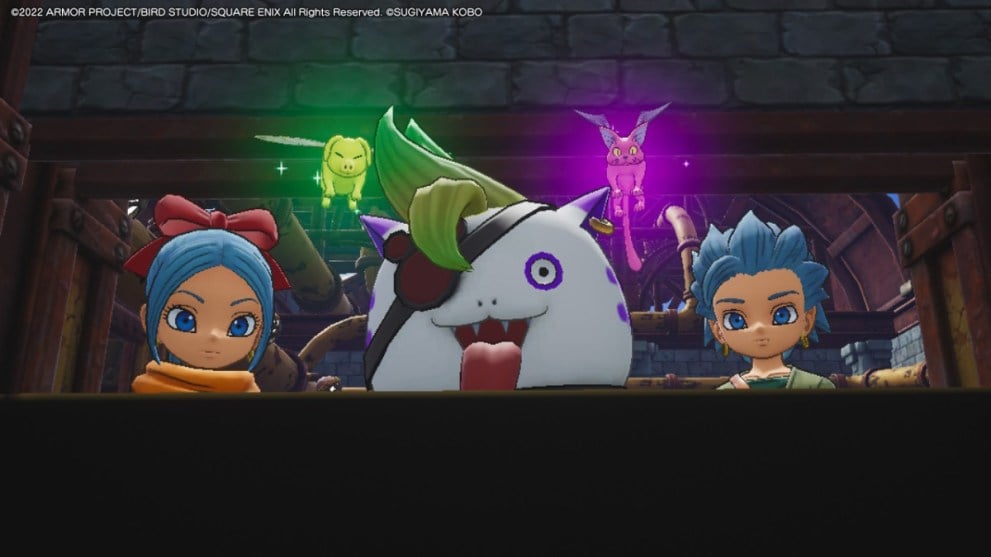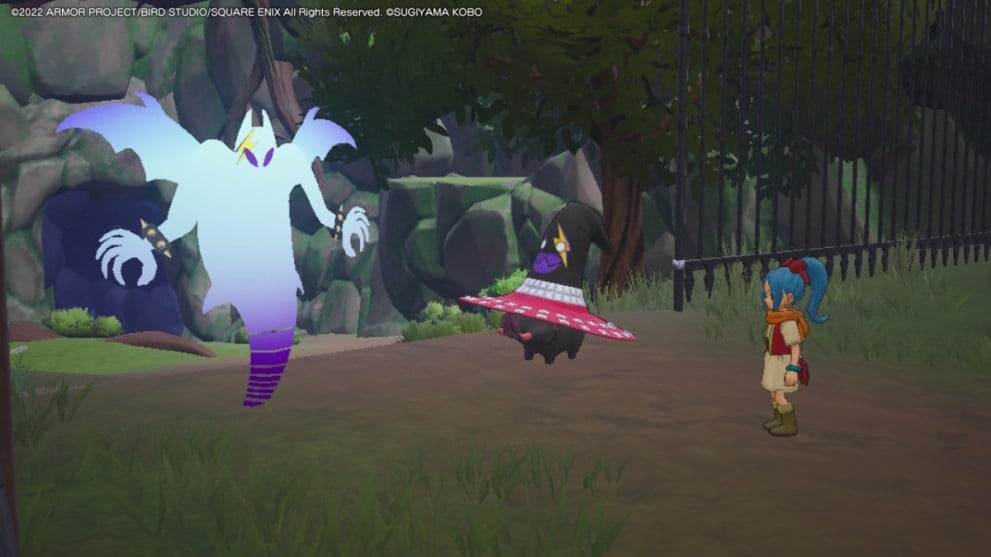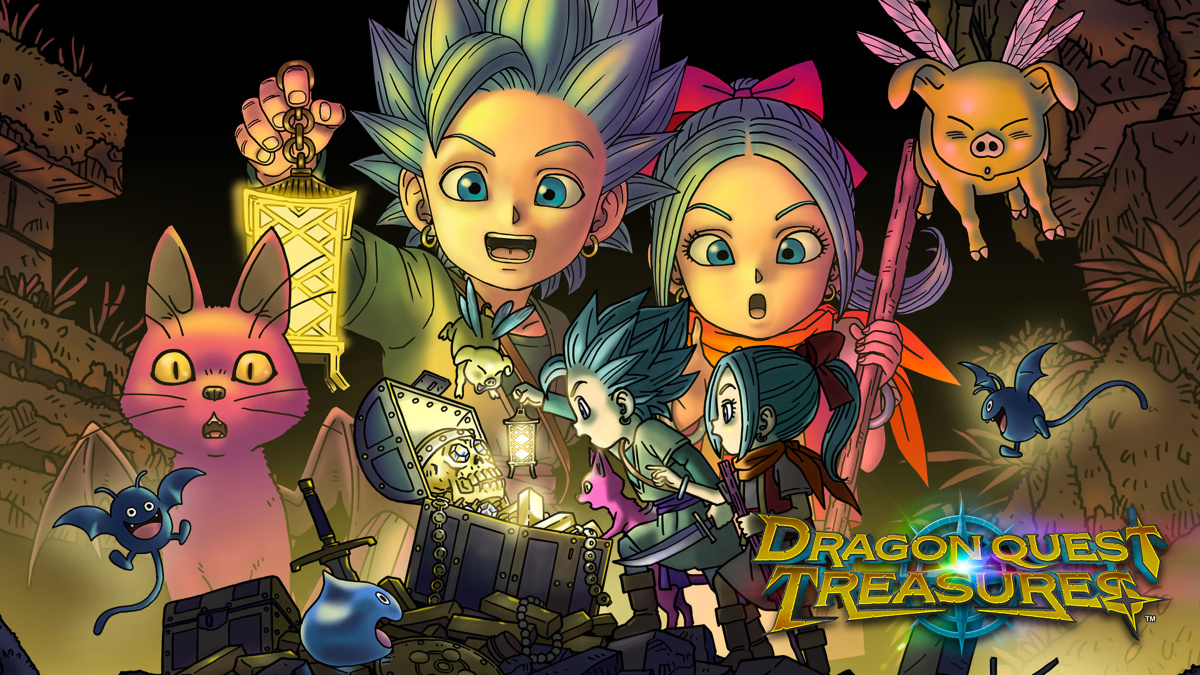The Dragon Quest series has always been one that lends itself perfectly to spin-offs and offshoot titles. Host to decades’ worth of iconic monster designs, lovable characters, and imaginative fantasy worlds, there’s no shortage of material for developers to work with. This made the announcement of Dragon Quest Treasures, a prequel spin-off of Dragon Quest XI, set up for at least a certain level of success among fans.
And yet, after playing through the first few hours of the title, I’m pleasantly surprised to report that the game is even more than that. Instead of opting for a by-the-books spin-off experience, Dragon Quest Treasures explores some new gameplay elements which could open up a slew of new gameplay options for the series.
Most of this is thanks to the game’s setup. Taking place before the events of Dragon Quest XI, the story focuses on Erik and his sister Mia; both of which dream of setting out on an adventure to obtain heaps of treasure. After freeing a flying cat and pig from the Viking ship they’re kept on, the two follow these strange animals to a hidden temple. Once there, they discover two daggers, and taking them transports the siblings to the far-off island of Draconia.
It’s here that they get the chance to live out their treasure-chasing dreams, as the island is host to a near-infinite amount of treasure to uncover due to some sort of magical influence. Some are more valuable than others, and it isn’t long before the siblings are drawn into a conflict between two groups of treasure hunters out to obtain seven particularly powerful treasures.
Exactly where these treasures are and what they’ll do once they’re gathered together remains to be seen, but Erik and Mia have no intention of letting them fall into someone else’s hands.

This is what leads to the the core gameplay of Dragon Quest Treasures. As both Mia and Erik, players set out to explore the island, complete tasks for other treasure hunters, and otherwise gain allies to help them in their own treasure hunting endeavors. This can be done in a number of ways, from tracking down buried treasures to delving into dungeons and battling some of the series’ trademark monsters.
It’s important to note, however, that the game doesn’t use Dragon Quest’s usual turn-based combat. Instead, it opts for a more active battle system wherein characters can freely move around the battlefield. They can likewise let off basic attacks via combos, and fire off spells or techniques after charging them up for a short amount of time.
This honestly acts as one of the game’s strongest points. While the base attack combos can feel a bit awkward at first, they fit the faster, exploration-focused gameplay better than a turn-based combat system would have. I had a blast making my way through areas and dungeons as a result, with enemy encounters feeling less like something to avoid and more like a natural segment of the world-traversal process.
Adding to this is the fact that Dragon Quest Treasures sees players enlist the help of monsters as party members. After completing tasks for specific creatures, they’ll join up with the player to lend them their strength, utilizing attacks and abilities they’re best known for from the wider series. It’s about what one would expect from a title wherein enemies can be collected and made into party members, but it’s well executed enough that it doesn’t hinder the rest of the experience.
Further helping matters is the fact that the monsters players add to their party provide traversal abilities during exploration segments. These range from providing a means of jumping higher to gliding around, and can allow players to access different parts of the world that would otherwise be locked off.

This was honestly my favorite part of the game. Knowing that helping different monsters and adding them to my party had advantages outside of combat was a great motivator to experiment with different party layouts, and made me want to enlist as many monster companions as I could. Likewise, it was a refreshing change of pace from other Dragon Quest titles, wherein the series’ adorable monsters didn’t serve many other purposes outside of opposing the player in combat.
In terms of Dragon Quest Treasures’ presentation, everything appeared to be fairly high-quality. The graphics and art style are basically the same as Dragon Quest XI, right down to the character designs and the overall performance of the title. The sound design, meanwhile, is as good as any mainline title, with voice acting, music, and sound effects that do the series justice and then some.
Granted, this does raise the question of what flaws or issues the game has, and honestly, there weren’t any glaring or obvious ones. At most, it carries the possibility of struggling to maintain its novelty. While its design and gameplay mechanics are novel and engaging, it does remain to be seen how well they’ll hold up and how varied they’ll be across a full playthrough.
In particular, the layout of areas could be a sticking point. While the wider island of Draconia holds plenty of different elements and aesthetics, the layouts of its first few dungeons could feel a little bland and would definitely drag the experience down if they were to be reused ad nauseum.
This is a big if though, and given how well the game plays and presents itself, I’m confident Dragon Quest Treasures as a whole will live up to its full potential. The series has always had more than enough it could translate to high quality spin-offs, and this game seems assured to open up promising new avenues for the Dragon Quest series to explore.













Updated: Dec 5, 2022 12:43 am